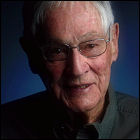 Bradford A. Smith, a research astronomer and former professor of planetary science and astronomy at the University of Arizona, dies at the age of 86 from complications arising from an autoimmune disorder. Smith became a public figure during the peak years of the uncrewed Voyager missions in the 1970s and ’80s, where, as the head of the imaging team for Voyagers 1 and 2, it fell to him to interpret freshly-received images from the outer planets and their moons for the press and the public, combining authoritative knowledge with a dry sense of humor at press conferences. Smith had reshaped the specs for Voyager’s onboard cameras since the mission was given the go-ahead in 1972, not only pushing for more powerful telescopic optics, but going out of his way to hire geologists and planetary science experts who could interpret the geological processes shaping the moons of Jupiter, Saturn, Uranus and Neptune from photos alone. When the moons of Jupiter greeted Voyager’s cameras with recently-reshaped surfaces and active volcanoes, that decision paid off. Prior to the Voyager mission, Smith had also been involved with imaging science in the Mariner and Viking missions to Mars, as well as helping to shape the specs for the planetary camera being developed for the yet-to-be-launched Hubble Space Telescope and advising imaging teams working on later missions.
Bradford A. Smith, a research astronomer and former professor of planetary science and astronomy at the University of Arizona, dies at the age of 86 from complications arising from an autoimmune disorder. Smith became a public figure during the peak years of the uncrewed Voyager missions in the 1970s and ’80s, where, as the head of the imaging team for Voyagers 1 and 2, it fell to him to interpret freshly-received images from the outer planets and their moons for the press and the public, combining authoritative knowledge with a dry sense of humor at press conferences. Smith had reshaped the specs for Voyager’s onboard cameras since the mission was given the go-ahead in 1972, not only pushing for more powerful telescopic optics, but going out of his way to hire geologists and planetary science experts who could interpret the geological processes shaping the moons of Jupiter, Saturn, Uranus and Neptune from photos alone. When the moons of Jupiter greeted Voyager’s cameras with recently-reshaped surfaces and active volcanoes, that decision paid off. Prior to the Voyager mission, Smith had also been involved with imaging science in the Mariner and Viking missions to Mars, as well as helping to shape the specs for the planetary camera being developed for the yet-to-be-launched Hubble Space Telescope and advising imaging teams working on later missions.
Tags:
Categories
Comments are closed